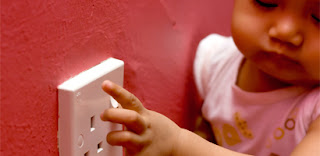In the first few days after the birth, your breasts produce colostrum
,
a protein-rich food that supplies your baby with valuable antibodies against
infection. Once you begin to produce milk on around the fourth day, your baby
will naturally stimulate your body into producing a plentiful supply for
his/her dietary needs.
The key to a good milk supply is feeding your baby when
he/she wants to be fed - and in the early days that may mean at one – or two –
hourly intervals. Breast milk production works on a demand and supply system:
the more often your baby nurses, and the more he/she takes, the more your
breasts will produce. Supplementary bottles of formula milk will undermine this
system: if your baby’s hunger is satisfied by a bottle, he/she won’t be eager
to suck and your breasts won’t get the stimulation they need.
Breast milk isn’t all the same. At the beginning of the
feed, your baby takes foremilk, which is watery and thirst-quenching. Then he/she
gets to the hindmilk, rich in calories and more satisfying. This is why it’s
important to let his/her suck for as long as he/she wants to at each feed:
otherwise he/she will soon be hungry again.
What you need to do
All you need to do to produce enough milk is to eat a good,
balanced diet with plenty of protein, to drink whenever you are thirsty – have a
glass of juice or milk on hand while you feed – and to rest as much as you can.
Your baby’s natural appetite will do the rest.
You need a lot of energy to produce breast milk, so this is
not the time to diet – you will feel run down and exhausted. Follow your
appetite, and make sure you get the extra calories you need from fresh, vitamin
– rich foods rather than “empty” carbohydrates. While you’re breastfeeding you
need to take a vitamin D supplement containing 10 micrograms (mcg). Everything
else you should get by eating a varied and balanced diet.



























